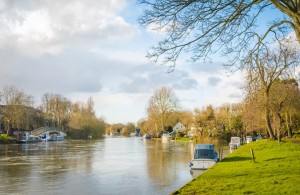Many cities around the world owe a big part of their success to the fact they are close to rivers. In some cases they are an essential feature, including London, Paris, New York, and Prague. In most of them you can still see countless signs of how the river influenced the development, including commercial architecture. Amazingly, there is also a new campaign to bring swimming back to cities. We want to have a closer look here to see why it is an interesting idea with many potential benefits.
The alliance
 The Swimmable Cities movement is approaching its first anniversary. It was set up before the Paris Olympics and Paralympics in 2024, coinciding with the fact that a number of swimming events would be held on the Seine. The timing was ideal to get eyes on their goals to make swimming in urban waterways possible and sustainable.
The Swimmable Cities movement is approaching its first anniversary. It was set up before the Paris Olympics and Paralympics in 2024, coinciding with the fact that a number of swimming events would be held on the Seine. The timing was ideal to get eyes on their goals to make swimming in urban waterways possible and sustainable.
Impressively, to date the alliance has members from 59 cities in 22 countries. It shows there is global support for their ideas and the benefits on offer. Just last month the organisation had its first summit in Rotterdam. Over three days, they invited various stakeholders to look at practical solutions for urban swimming. In addition, they asked decision makes to sign up to their 2030 charter.
The benefits
Swimmable Cities backs the aim to improve urban waterways because it can provide real benefits to the cities. Crucially, it can improve public health, biodiversity, and culture. Most importantly, it can make areas more liveable. This is even more important at the moment with many urban areas struggling in the face of more frequent, hotter, and longer lasting heatwaves.
The alliance also promotes the economic benefits of urban swimming. It can create new opportunities and also influence things like commercial architecture and housing.
Investments
The Seine was the perfect illustration of the need to improve urban waterways. While there were plans to use parts of it during the 2024 Olympics and Paralympics, there were big concerns about safety and water quality. In fact, there was a lot of disruption before and during the event, including the cancellation of trial runs and training.
The Seine water quality became a huge controversy in the aftermath of events like the triathlon when several athletes got sick (although there was no concrete proof the water was the cause). At several times the water quality was below the acceptable standards for swimming. Crucially, the level of E.coli was above the safe limit at points.
All the issues and controversy with the Seine shows how important the right investments are. In fact, Paris invested £1.5bn to improve the river, making it accessible for swimming for the first time in a century. The investment was also to ensure it would be cleaner for future use.
Swimmable Cities encourages stakeholders to invest wisely to improve urban waterways and make them accessible. This includes improving water quality, safety, biodiversity, and more. Ultimately, the aim is to support the right to swim and make areas vibrant spots.
The right commercial architecture is key to success
Urban areas have lots of challenges to deal with at the moment, including population growth, climate change, and air quality. Different things could be a big help, including improving urban waterways and investing in more blue and green infrastructure. Developing exceptional commercial architecture and homes is vital too.
Coffey Architects is a great team to work with if you’re thinking about a project. Our portfolio shows how skilful and creative we are, able to take on everything from homes and housing to mixed use developments, commercial spaces, and more. We can even work effectively in areas near waterways, including wonderful riverside settings.
So, get in touch and tell us what you have in mind.